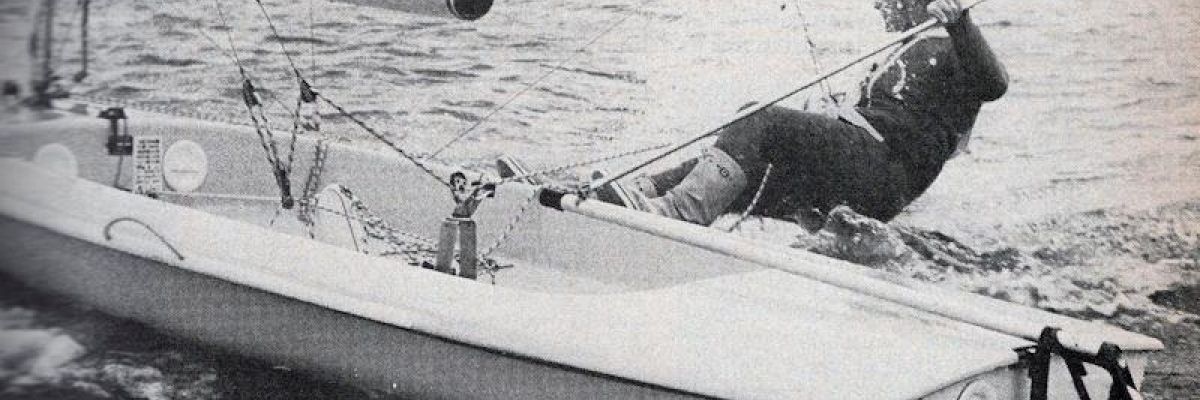
THE EARLY YEARS B.C?(BEFORE CONTENDERS)
The Contender dinghy was originally designed back in 1967 by Australian Ben Lexcen as a potential Olympic successor to the Finn class. The boat won the 1969 Olympic trials, but for a variety of reasons was never adopted as an Olympic class
There are so many classes today, that it is hard to imagine a time when the choice of dinghy for a single handed sailor wanting to race internationally consisted of the International Canoe, the Finn or the OK.
The Finn of course was very much ‘top dog’ as since 1952, it had been the Olympic dinghy, difficult to tune and with the then unsophisticated rig, making it something of a brute to sail.
No wonder then that as the 1960s started to swing, sailors started looking for a boat where agility, rather than weight and body strength, would play a greater part in determining results. The path to improved performance had already been highlighted in 1962, with the lightweight flying scow from Peter Milne, the Fireball. This was a boat that was fun, fun, fun.
What was now needed was a single handed dinghy that could offer the same thrills and spills.
Eventually, the IYRU (now ISAF) agreed to sponsor a new performance single handed dinghy and published a set of criteria that allowed for a more powerful rig than was set on the Finn, that could be balanced by a sitting out ‘aid’. The choice of words is important, as sliding seats and other aids to extending the helm's weight outboard were deemed acceptable, but a trapeze was not. The view of the yachtsmen of the day, who ran sailing as a sport, was that sailing a boat single handed from the trapeze, let alone racing it, was ‘unseamanlike’!
















